2010s – 2020s
History of Fashion 2010s – 2020s
‘Fashion should be a form of escapism and not a form of imprisonment’
Alexander McQueen
Arts and Culture
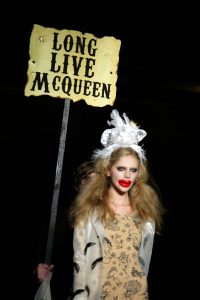 Art and culture played a pivotal role in shaping fashion during this decade. High fashion brands collaborated with contemporary artists, blurring the lines between art and fashion. Designers like Alexander McQueen and Jean-Paul Gaultier drew inspiration from art movements such as surrealism and cubism, resulting in avant-garde and sculptural garments. The fusion of art and fashion not only created visually striking designs but also challenged conventional notions of clothing as wearable art.
Art and culture played a pivotal role in shaping fashion during this decade. High fashion brands collaborated with contemporary artists, blurring the lines between art and fashion. Designers like Alexander McQueen and Jean-Paul Gaultier drew inspiration from art movements such as surrealism and cubism, resulting in avant-garde and sculptural garments. The fusion of art and fashion not only created visually striking designs but also challenged conventional notions of clothing as wearable art.
Shapes and Silhouettes
The decade witnessed a shift in fashion silhouettes, moving away from the ultra-skinny and body-conscious styles of the previous decade. Oversized and relaxed silhouettes gained popularity, with designers like Demna Gvasalia at Balenciaga leading the way. The “normcore” trend embraced simplicity and comfort, emphasising functionality over extravagance. Wide-legged pants, boxy blazers, and chunky sneakers became wardrobe staples, reflecting a desire for more relaxed and practical fashion choices.
The Icons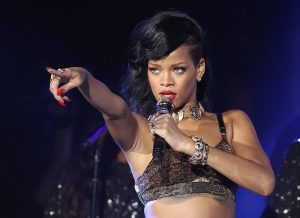
The decade saw the emergence of several fashion icons who transcended their roles as models or actresses to become influential style figures. Personalities like Rihanna, Beyoncé, and Harry Styles became known not only for their talent but also for their distinctive fashion choices. Rihanna’s daring and boundary-pushing outfits made her a fashion trailblazer, while Harry Styles challenged gender norms with his gender-fluid style, demonstrating how fashion could be a powerful form of self-expression and activism.
Accessories
Accessories underwent a transformative evolution during this decade. Statement accessories took centre stage, with oversized sunglasses, chunky sneakers, and bold belts becoming must-have items. The rise of athleisure brought sporty accessories like fanny packs and visors into high fashion. Designer brands also reimagined classic accessories, giving them a modern twist. For example, luxury brands like Gucci and Louis Vuitton reinvented their iconic logos on belts, bags, and scarves, making the logo accessory a symbol of status and style.
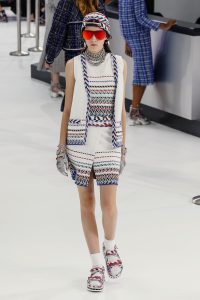 Catwalks
Catwalks
Fashion runways became increasingly theatrical during the 2010s, with designers using catwalks as stages for storytelling. Shows were no longer just about presenting collections; they were immersive experiences that merged fashion, art, and entertainment. Brands like Chanel created elaborate sets, and designers like Karl Lagerfeld turned the runway into a supermarket or airport terminal. These spectacles not only captured the audience’s imagination but also set trends in fashion presentation, emphasising the importance of storytelling in fashion.
Designer Collaborations
Designer collaborations with mass-market brands reached new heights in popularity. These partnerships democratised fashion, allowing consumers to access designer aesthetics at more affordable price points. High-profile collaborations such as H&M x Balmain, Target x Missoni, and Adidas x Kanye West’s Yeezy line created a frenzy in the fashion world. These limited-edition collections often sold out within hours, demonstrating the power of collaborations in driving consumer excitement and reshaping retail strategies.
The Designers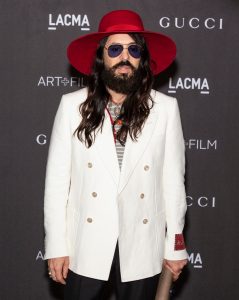
A new generation of designers rose to prominence during this decade, challenging traditional fashion norms and inspiring fresh perspectives. Virgil Abloh, the founder of Off-White, became the first African-American artistic director of Louis Vuitton’s men’s wear, symbolising a shift towards inclusivity in the fashion industry. Phoebe Philo’s minimalist designs at Céline garnered a devoted following, while Alessandro Michele’s eclectic vision at Gucci breathed new life into the iconic brand. These designers challenged the status quo and redefined luxury, showing that fashion could be unconventional, diverse, and reflective of the zeitgeist.
Festival Wear
The rise of music festivals like Coachella and Burning Man led to the emergence of festival fashion as a distinct trend during this decade. Festival-goers embraced bohemian, free-spirited styles characterised by floral crowns, fringe, crochet, and tie-dye. Boho-chic aesthetics dominated festival wear, inspiring a broader cultural influence on mainstream fashion. Designers incorporated festival-inspired elements into their collections, introducing a sense of playfulness and carefree spirit into everyday fashion.
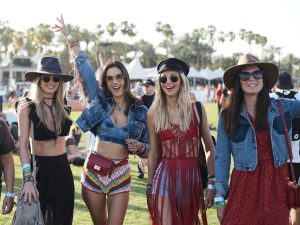
Sustainability and Ethical Fashion
The fashion industry faced growing scrutiny for its environmental and ethical impact during the 2010s. This led to a significant shift towards sustainable and ethical fashion practices. Designers and brands began to prioritise eco-friendly materials, ethical labour practices, and transparency in their supply chains. Sustainable fashion movements, like “slow fashion” and “upcycling,” gained momentum, encouraging consumers to invest in quality, long-lasting pieces and reduce waste. This focus on sustainability reshaped the fashion industry’s approach to production and consumption.
Influence of Streetwear
Streetwear culture, rooted in urban communities and skateboarding, gained mainstream recognition and influence during this decade. Brands like Supreme, Off-White, and Yeezy became synonymous with streetwear aesthetics. Hoodies, graphic tees, sneakers, and logo-driven designs became highly coveted items. The fusion of streetwear with high fashion challenged traditional notions of luxury, as streetwear brands collaborated with luxury houses, blurring the lines between street style and high-end fashion.
Gender Fluidity and Diversity
The fashion industry made strides towards greater inclusivity and diversity during the 2010s. Gender fluidity became a prominent theme, with designers challenging traditional gender norms and presenting unisex and gender-neutral collections. Models of different ethnic backgrounds, body types, and ages gained visibility on runways and in campaigns, promoting a more inclusive representation of beauty. The #BlackLivesMatter movement also sparked discussions about racial diversity and equity within the industry, leading to more significant efforts to address racial disparities and celebrate diverse voices.
E-commerce and Digital Transformation
The decade marked a digital transformation in the fashion industry, with the rapid growth of e-commerce and online fashion platforms. Brands and retailers embraced online sales, offering customers a more convenient and personalised shopping experience. Social media, particularly Instagram and TikTok, became powerful tools for fashion marketing and trendsetting. Influencer marketing and digital fashion shows emerged as new ways to reach consumers and showcase collections, changing the landscape of the fashion industry.

History of Fashion 2010s – 2020s

